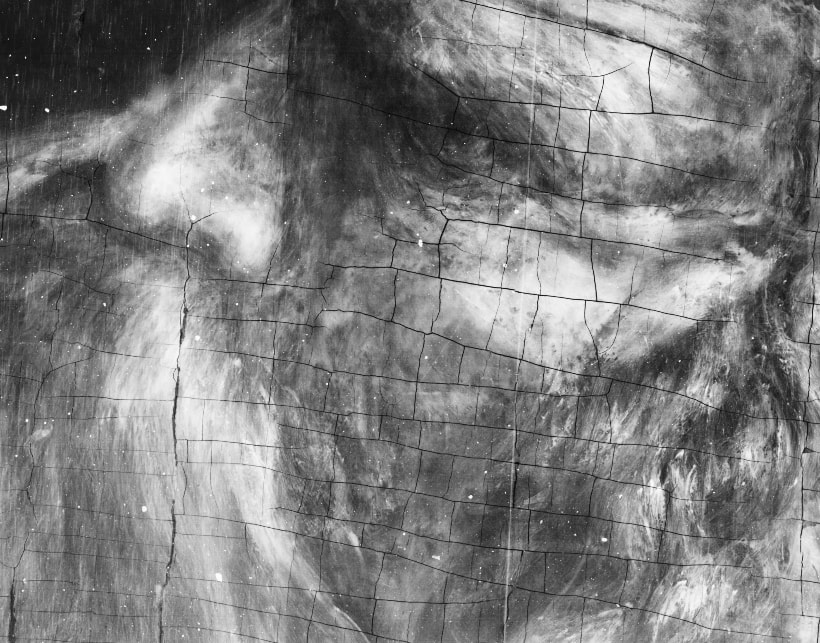Have you ever heard of Wolfgang Beltracchi, probably the biggest art forger in history, who fooled the most respected art experts, by painting and selling his own reproductions of works by Max Ernst, Fernand Léger and even Pablo Picasso? Well, if you have, the following account of events might sound familiar.
In early December 2017, Yoann, from our Sales department, received a peculiar phone call from one of our distributors in the United States. The Great Masters Art Foundation was in search of a portable x-ray generator to radiograph a 16th century Italian painting.
As you might have guessed from reading even this far, some doubt had been cast around the authenticity of the old piece. Just like Beltracchi’s titanium white paint (the cause of his eventual imprisonment), green pigments dating from the 1930’s were found on the supposed 16th century painting. Saint Jerome, a canvas attributed to Parmigianino or his circle, valuated at about $850,000, was on the verge of becoming a fraud.
Since the questionable pigments were not in direct contact with the canvas, this particular color could have been added much later, during a restoration, for instance.
To settle the case and determine the authenticity of the painting, Sotheby’s, Britain’s world-renowned auction house, hired a top expert to study the painting with all the scientific tools available to finally ascertain the true nature of the masterpiece.
Professor Maurizio Seracini from Great Masters Art of San Diego, was invited to Paris to provide an expert opinion.
X-Rays have been a recurring technique for analyzing painting and artifacts for quite some time. Thanks to its penetrating power, this electromagnetic wave has no problem going through most material that made out ancient artifacts and masterpieces (fabric, wood, rock, metal and bones). Just as an x-ray at the dentist or hospital, this beam of light captures what the human eye cannot. Once the x-ray beam travels through an object, it creates a shadow of what is inside the object onto a receiving medium such as a silver film or a digital detector. With the help of science and technology, historians and experts can lift the veil on secrets well hidden under visible light, which makes x-ray analysis a must for many professionals.
As Professor Seracini and his team were not in possession of an x-ray generator capable of easily being transported and set-up in just a few minutes, Alain Paulus, Research & Development Director at Teledyne ICM, and Laurent Colson, Marketing & Communication Manager, drove to Sotheby’s, Paris. Equipped with a CP225D constant potential x-ray generator and a Go-Scan digital detector, the team of experts, led by Professor Seracini, was finally ready to study the painting.
According to Professor Seracini, x-ray analysis should be the number one step when analyzing old masters’ works. Thanks to the power of x-rays, a well-trained eye is able to analyze all the cracks and layers of almost all paintings and truly determine its origin.
Armed with the CP225D and 25 µm D-4 films, Professor Seracini, proceeded to shoot every part of the painting as to have an x-ray image of the entire work of art. At 40 kV and 4.5 mA, the radiation level was as low as a dental x-ray. This particular setting is tailor-made for such subtle application, because it allows the x-rays to penetrate the fabric of the canvas in such a way that every little detail, invisible to the naked eye, becomes crystal-clear under x-rays. In a few minutes, the x-ray exposure section was over and only the developing part of the process remained.
Since Alain and Laurent had brought the new GO-SCAN digital panel alongside the CP225D x-ray generator, Professor Seracini and his team, were more than happy to test the efficiency of such a revolutionary imaging technique. The portable digital x-ray detector was put in place, and within the blink of an eye, a sharp and detailed image of the face and beard of the old man portrayed on the canvas appeared on the touchscreen of the connected tablet. Every crack, paint spot, and brush stroke, previously invisible to the naked eye, was now clear as day!
Since the expert opinion was requested by Sotheby’s, and was highly sensitive, Professor Seracini and his team were not able to share their conclusions. However, witnessing the efficiency of Teledyne ICM’s x-ray products on such a delicate piece of art certainly highlighted the expertise and ability of Teledyne ICM’s solutions for non-destructive imaging.
Laurent Colson – Marketing & Communication Manager


